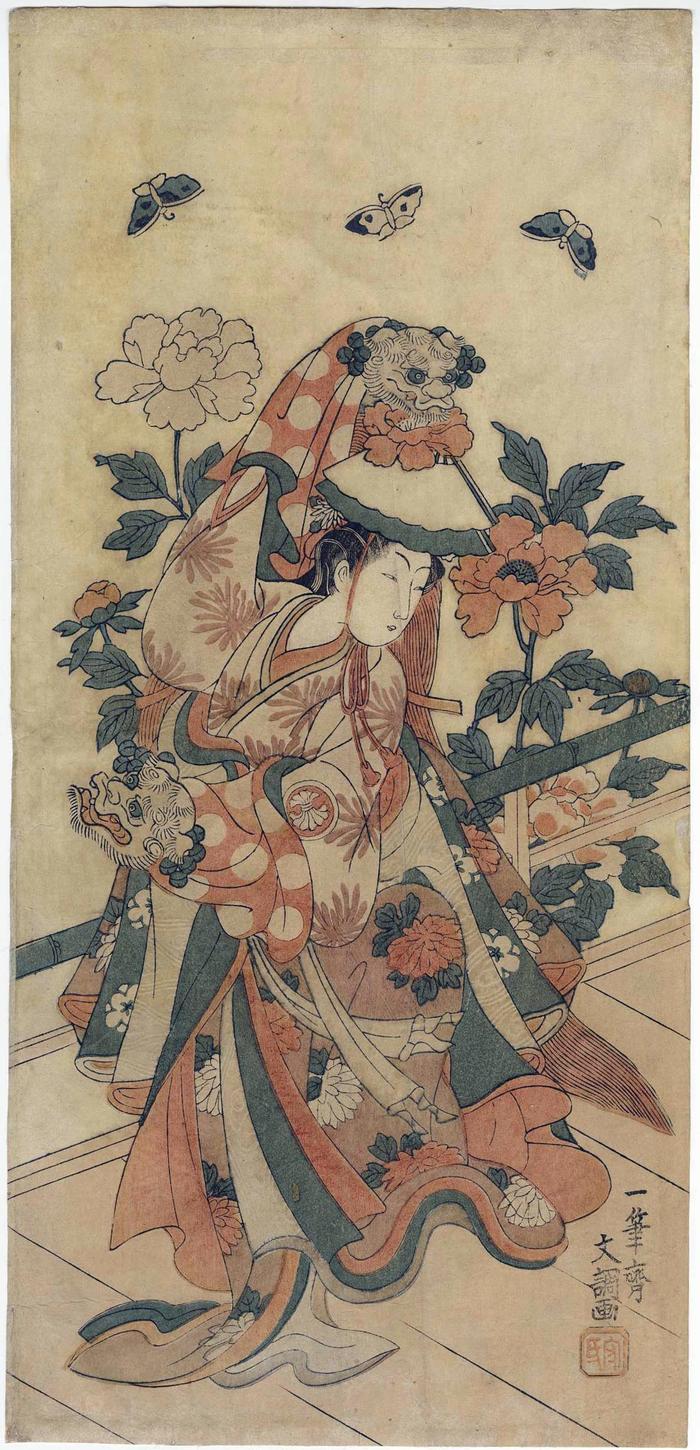Ippitsusai Bunchō (一筆斎文調) (artist )
Ippitsusai Seishi (family name - 一筆斎 誠之)Kishi Uemon (nickname - 岸右衛門)
Bunchō (go - 文調)
Hajintei (go - 巴人亭)
Sōyōan (go - 桑楊庵)
Links
Biography:
Ippitsusai Bunchō (一筆斎文調) flourished from ca. 1765 until 1792. He was thought to have been of samurai stock. (The Actor's Image, p. 19) Occasionally he collaborated with Shunshō, his friend. (Ibid.)
"If we know little about Shunshō, we know even less about Bunchō. The entry in Ukiyo-e Ruikō merely says that he was "active in the Meiwa era," that he was an "unskillful painter of actors and the everyday life of men and women," and that "he often portrayed Yaozō II." We have no way of knowing when he was born, and our only clue to his date of death is a surimono designed by Kubo Shunman (1757-1820) commemorating the seventh anniversary of his death. The surimono is undated but is probably of the late 1790s at eh earliest, which suggests that Bunchō died in teh early 1790s - in other words, at about the same time as Shunshō.
To learn more about Bunchō, we must turn to his work. Fortunately his prints have survived in considerable numbers; some estimates go as high as eight hundred. There are also a few paintings by or attributed to him. On examination, this body of work seems to date almost entirely between 1766 and 1773, but Bunchō is known to have illustrated a book of popular fiction in 1755 and to have designed a calendar print (egoyomi) for 1790, which is currently accepted as his last known work. The suggestion that most of all of Bunchō's prints and paintings were designed within a span of eight years may seem improbable, but it is not impossible. In fact there are good reasons why Bunchō's activity might have been limited to this particular period. As we have already seen, 1765-1766 marked a turning point in ukiyo-e. It was a favorable moment for a new artist to make his debut. The death of Harunobu in 1770 marked another, albeit less dramatic, turning point. Within a year or two of his death the Harunobu style of the 1760s had disappeared and a new, more robust style had arisen in its place. Artists who felt uncomfortable with the change either retired or fell out of favor. It is likely that Bunchō was one of those.
There can be no question of the extent of Harunobu's influence on Bunchō. It is at its most marked in the prints of lovers and women of the pleasure districts... but it is apparent throughout his work in his evocative use of landscape elements and frequent references to poetry. Yet one would never mistake a print by Bunchō for one by Harunobu. His figures are taller than Harunobu's and less dainty (even at times, somewhat ungainly), and the faces of his women are longer, with lower foreheads and narrower, more slanting eyes. Often a look of faint distaste or superciliousness seems to play across their features, which may account for the air of aloofness that some viewers have detected in Bunchō's work. Bunchō also seems to have preferred rather acerbic color harmonies, with yellow-greens, tans, dark browns, and oranges predominating.
The extent to which Bunchō was influenced by Shunshō is much harder to determine. Some of Bunchō's portrayals of actors in male roles seem quite similar to Shunshō's, but his portraits of onnagata are distinctive, with a seductive charm all their own. And even where similarities do exist, it is impossible to determine who was influencing whom, since both artists seem to have begun designing prints at about the same time. However one might have influenced the other, they apparently considered one another equals, because they collaborated on several projects." (Ibid.)
